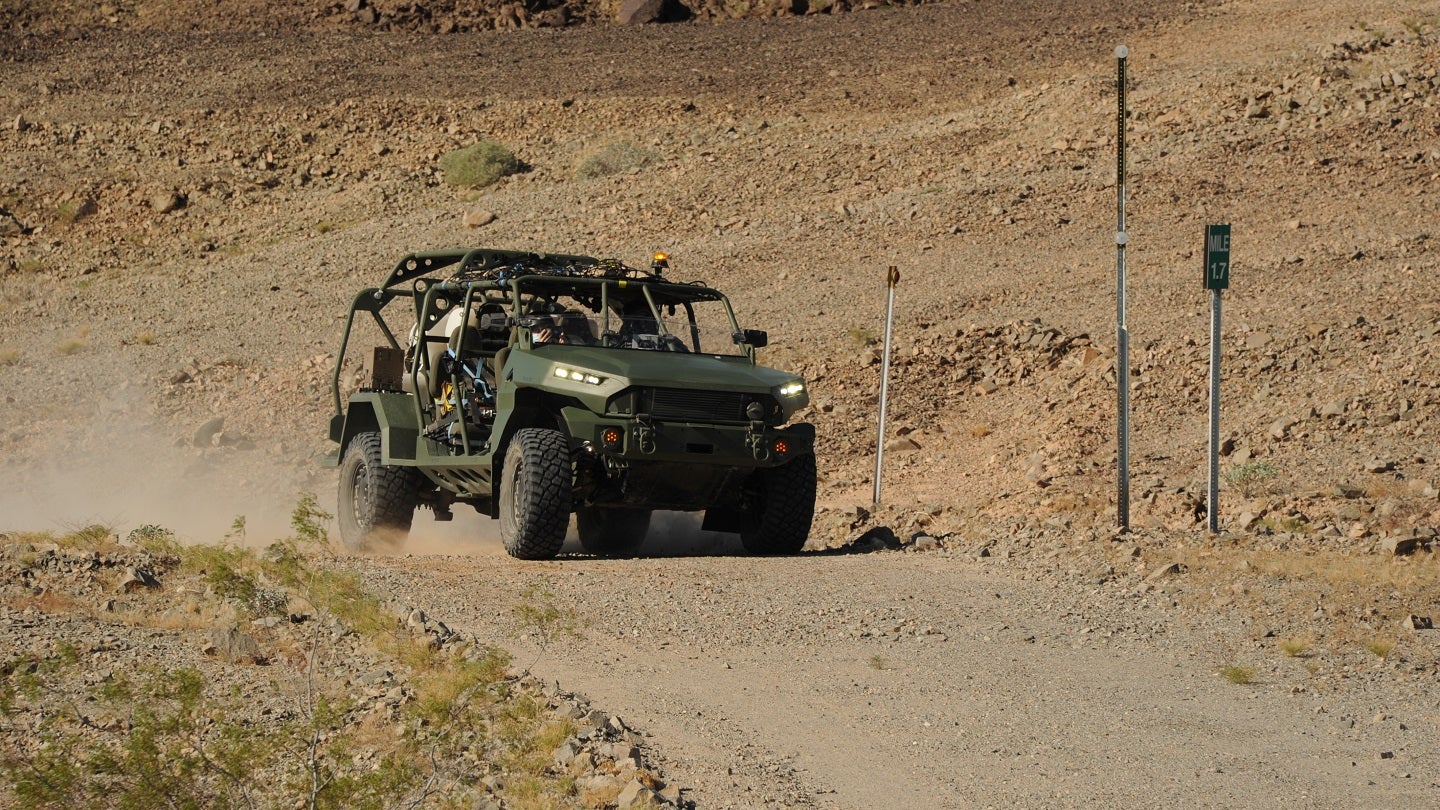
The recent announcement that GM Defense had incorporated GM Defense Canada in a bid to expand into new markets indicates the potential advantages that companies with a strong commercial sector history can have when entering the defence domain.
Participating in the recent Canadian Association of the Defence and Security Industries exhibition at the end of May this year, GM Defense demonstrated a number of commercial-based solutions, including its LUV prototype based on the Chevrolet Silverado, and two variants of the in-service Infantry Squad Vehicle, based on the Chevrolet Colorado ZR2.
In showcasing these platforms, GM Defense stated that the platforms could be serviced and maintained through GM Canada’s network of 448 commercial dealerships and GM’s global supply chain. GM Defense is a subsidiary of US manufacturer General Motors.
GM Defense stated in a 29 June release that the company could incorporate additional entities in other countries, with focus areas for the business extensive, including North America, Europe, Indo-Pacific, and throughout the Middle East.
Speaking of the incorporation of GM Defense Canada, Stephen duMont, president of GM Defense said: “We will continue to leverage General Motors’ advanced commercial technology, engineering resources and investments in Canada that help our global defense and government customers transition to a more electric, autonomous and connected future.”
In early July, it was reported that GM Defense had been selected by US Department of Defense’s Defense Innovation Unit (DIU) to prototype an energy storage unit, as part of the DIU’s Stable Tactical Expeditionary Electric Power (STEEP) programme.
How well do you really know your competitors?
Access the most comprehensive Company Profiles on the market, powered by GlobalData. Save hours of research. Gain competitive edge.

Thank you!
Your download email will arrive shortly
Not ready to buy yet? Download a free sample
We are confident about the unique quality of our Company Profiles. However, we want you to make the most beneficial decision for your business, so we offer a free sample that you can download by submitting the below form
By GlobalDataThe aim of the STEEP initiative is to provide system that can support tactical microgrid and energy management capabilities in austere locations, reducing logistical requirements and the reliance on fossil fuels as the primary energy source across the DoD.
To this end, GM Defense will seek to leverage GM’s commercial electric vehicle propulsion architecture, the Ultium Platform, to deliver a scalable energy storage unit to support deployed operations. The company stated that if successful, STEEP will transition to a US Marine Corps (USMC) programme and will serve as GM Defense’s first programme with the USMC since relaunching the business in 2017.
Commercial showing the way in speed of innovation
A shift in defence economies among the Western world has seen an increasing use of commercial sector expertise and systems, as militaries seek to speed up the pace of innovation and development. With the market drives of the commercial sector, companies involved in traditional non-military programmes are able to ‘innovate at the pace of change’, a key phrase mentioned by defence planners more used to slow, incremental progress.
Sectors where commercial technologies have gained a foothold in the defence markets include all cyber, space, air, land, and maritime domains, where a growing emphasis is placed on machine learning and AI analysis for autonomy and distributed concepts of operation.
Tristan Sauer, aerospace, defence and security analyst at GlobalData, considered the incorporation of GM Defense Canada as recognition of the shifting dynamics in the global military land vehicle market, particularly in relation to supply chains and the projected ruse in demand for logistical support an utility vehicles.
“As demonstrated by the conflict in Ukraine, the conduct of high intensity warfare on the modern battlefield imposes a high rate of attrition on military assets, particularly unarmoured logistical support and utility vehicles, creating an imperative for all modern armies to ensure their fleets have sufficient ‘depth’ to withstand sustained losses,” Sauer said.
Canada’s expenditure in the light utility vehicles is expected to rise from $39m in 2023 up to $60m in 2024, before levelling off at around $49m in 2033, according to GlobalData forecasts.
“By investing in a regional facility, GM Defense can now guarantee that its long-term offerings within this market segment will present a more affordable and politically palatable option for the Canadian government,” Sauer explained.
Should this approach prove successful, Sauer continued, GM Defense could similarly expand into other nations globally, using its established footprint in the civilian automotive market providing additional footholds and leverage in future negotiations.







